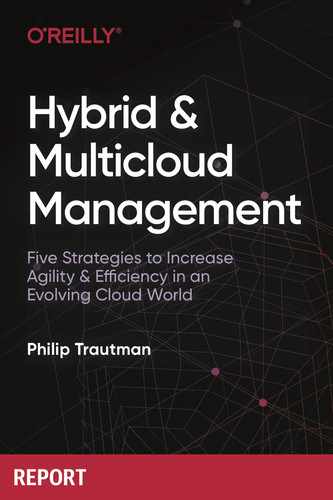Many enterprises have moved to a hybrid cloud model, dividing their IT services between on-premises operations and one or more public clouds. But for many companies, adopting a hybrid cloud model is anything but smooth. This report explores some of the most pressing challenges and suggests solutions that IT leaders and business decision makers should pursue to address them. Author Philip Trautman explains how these strategies will enable you to eliminate operational silos and make your team more efficient. You'll learn how to reduce the risk of errors, increase operational agility, and manage cloud spending. You'll also be able to make smarter cloud choices, gain greater control over private and public cloud operations, and increase integration across clouds. This report describes five key hybrid cloud strategies to help you:
Table of Contents
- Preface
- Hybrid Cloud Is Critical for Enterprise Agility and Efficiency
- Strategy 1: Create a Unified Infrastructure Control Plane
- Strategy 2: Streamline the Application Life Cycle
- The Cloud Amplifies Application Challenges
- Increasing Demands
- Complex Deployments
- Limited Resources and Low Productivity
- Scaling and Life Cycle Events
- Cloud Native and Traditional Enterprise Applications
- Plan of Action: Automate Application Deployment and Management
- Identify Your Goals
- Choose the Right Solution
- Summary
- Strategy 3: Migrate Applications More Easily Among Clouds
- Strategy 4: Enable Consistent Security Policies Everywhere
- Strategy 5: Track and Optimize Private and Public Cloud Spending
- What’s Your Hybrid Cloud Strategy?
